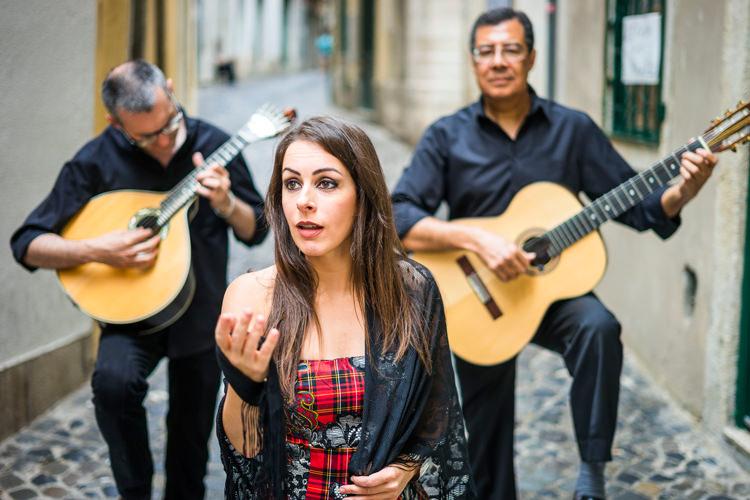Fado: The soul of Portugal
''Fado is endless. It is a universe; It is the world. It is a mystery'' […]- L.E Gray (2013:11)
Introduction
Fado. It is more than a musical genre. It is a feeling. It is the feeling of anticipation, sadness, pain and love. It is a way of being. Fado is Portugal's musical pride and is considered one of the country's national treasures. It is a musical genre that hides the history of Lisbon and Coimbra and is the most recognized music of Portugal. What distinguishes the fado is a unique sense of nostalgia, which is not translated into other languages. It is destiny and as Amalia Rodrigues (1920-1999), had said: ''We invented the fado because we have a lot to complain about […]''. But, what is the history behind the nostalgic music of Portugal?
The origin of fado and its evolution
Fado means destiny. It is associated with the Portuguese word ''saudade'', which was used in the 13th century. The meaning of this word is very difficult to be translated into other languages, because it expresses an amalgamation of emotions. It expresses a deep emotional state, an expected melancholy. Therefore, fado is the words of the soul. This special kind of music developed in the poor neighborhoods of Lisbon in the early 1800s, due to the prevailing political situation caused by internal migration. This population growth combined with the conditions of poverty led to smuggling, theft and prostitution. As a result, taverns and tolerance houses were created with the name ''casas de fado''. According to the first fado singer, Maria Severa (1820-1846), fado in those places was accompanied by a guitar, which the performer rested on his knee, whilst the song expressed sadness followed by a loud dance rhythm. Since 1840, fado spread to other urban centers in Portugal. During Portugal's dictatorship (1926-1974), the fado was facilitated through censorship, sanitization and professionalization. However, following the revolution in 1974, there was a backlash against fado. People believed that fado has been stained by the previous regime and put it out of their favor for over a decade. But, fado was so powerful that it was impossible for it to disappear. So, in the 1990s the younger generation revived this exceptional kind of music. The expansion of fado and its repertoire, as well as its maturation, led this music to escape from the poor neighborhoods and become beloved by the aristocrats and the intellectuals. The musicians and singers (fadistas) of fado pay attention now to their appearance, whilst the selection of lyrics is done very carefully without improvisation. Nevertheless, the process of professionalization of fado became even more intense with the advent of the electric microphone in 1925. So, in 1926 recordings began in which excellent fadistas (fado singers)participated, including Adelina Fernandes and Alberto Costa. These recordings had great success, considering that in 1929 the number of discs sold exceeded 67.000(!). Apart from the discography, fado was introduced successfully to radio. Through radio stations, fado was heard throughout Portugal, even in the most remote villages.
The two main varieties of fado
There are two main varieties of fado: the Coimbra fado, which is more sophisticated and the Lisbon fado, which is the most popular.
The Coimbra fado was introduced to the city of Coimbra in the middle of the 19th century and through the students it became known in the academic community of the town. The themes of Coimbra fado concern student's everyday life and the texts have a literary and academic style. The songs are performed only by male singers (fadistas), dressed in black. The fados that stand out are: ''Balada da Despedida'', ''Fado Serenata'' and ''L'Ultimo Fado''.
Lisbon fado, as mentioned, is the most popular. It is sung mainly by women in public places. This fado style is mournful. It reflects the pain, sadness and sorrow of a wife whose husband is possibly lost.
Fado nowadays
From the 70s, the fado developed rapidly. Television, radio, and discography played a decisive role in this evolution. Two of the greatest fado singers who contributed to the success of fado were Amália Rodrigues, who established the most famous form of fado songs, and Carlos do Carmo. Many other important artists followed, including the internationally renowned band ''Madredeus'' (1985). Now, the success of fado on the international scene is undeniable and this, of course, has also spurred the international media's interest. The important here is that in November 2011, the United Nations Educational, Scientific and Cultural Organization declared fado and ''Intangible Cultural Heritage of Humanity''. After all the difficulties, fado remains strong and has undoubtedly won a place in our heart.

Conclusion
Fado is a musical form that combines the folk and traditional music of Portugal. Fado travels the world on internationally marketed recordings by amazing singers. It is not just a music genre, but the hidden part of the soul of the Portuguese people. It is their own destiny. It is love, pain, happiness, sadness, and memories. Lead yourself to the heart of fado and indulge in the sweet melancholy of this music through the Radio Art's channel ''Fado'' and you can discover great artists such as Cristina Branco and Carlos do Carmo. So, close your eyes and travel with this wonderful music.
You may also like...
Our website respects the intellectual property rights of creators, as well as the music rights of authors and composers.
The musical works are provided solely for the private use of each visitor/user
and any further exploitation of them in any way is prohibited without prior permission from AUTODIA and EDEM Rights.
Radio Art is fully approved by the Greek Collective Rights Organizations | AUTODIA | EDEM Rights
Copyright © RABS - Radio Art Broadcasting services Ltd. All rights reserved.
The Art of Relaxing & Meditation Music
Privacy Policy & TOS








